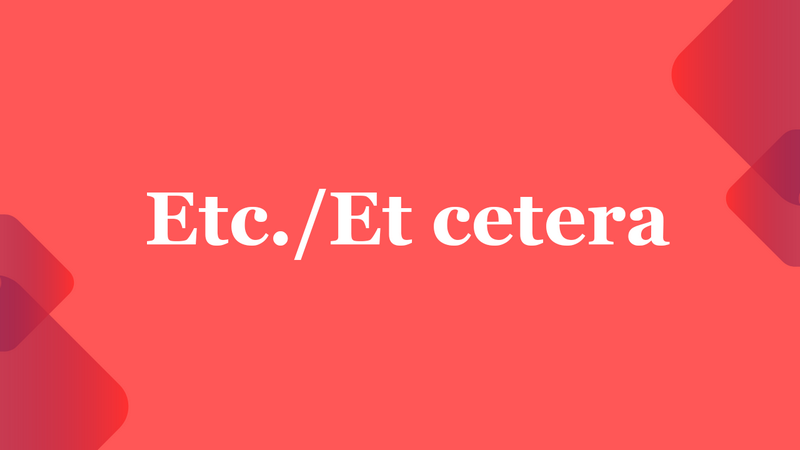Have you ever caught yourself typing “etc.” at the end of a list without thinking? Or wondered if it even makes sense to use it there?
It’s easy to throw this common abbreviation around incorrectly. But using “etc.” properly can make your writing and speaking more clear and concise.
In this post, I’ll cover everything you need to know about effectively using “etc.”:
- What “etc.” stands for and when you should use it
- Specific examples of using “etc.” correctly in lists
- Common mistakes to avoid
By the end, you’ll have a simple checklist to follow whenever you find yourself tempted to add “etc.” Apply these best practices to instantly boost your English skills.
What Does “Etc.” Mean?
“Etc.” comes from the Latin phrase “et cetera” which translates to “and the rest.” It’s used to indicate additional similar items without having to list each one out.
For example:
- The bakery sells bread, cakes, brownies, etc. (Here, “etc.” implies other baked goods like cookies and muffins.)
“Etc.” works when the items are related in some way. It doesn’t make sense after a random assortment like “milk, chairs, books, etc.” because it’s not clear what “etc.” is referring to.
When to Use “Etc.”
We use “etc.” when we have a list of more than two or three things, and we don’t want to waste time saying or writing each thing. Also, the things that you are talking about need to be similar or related in some way.
Here are more examples where it does work to use “etc.”:
- The pet store sells all types of pets: dogs, cats, lizards, birds, etc. (Because we know that we are talking about normal pets, we can easily understand that “etc.” means “and other animals that people often have as pets,” for example, hamsters, snakes, and rabbits.)
- Stationery refers to things that we use for writing: pens, pencils, paper, etc. (Because we know that we are talking about things used for writing, we can easily understand that “etc.” probably includes things such as ink, erasers, and paper clips.)
- Our garden is full of herbs; we grow rosemary, basil, thyme, etc. (Because we know that we are talking about herbs, we can easily guess that “etc.” includes other common herbs such as parsley, cilantro, mint, and lemongrass.)
Common Mistakes
Now, let’s go over some key tips for using “etc.” correctly:
- When writing, use the abbreviation “etc.” but when speaking, pronounce it as “et cetera” (not as individual letters).
- Don’t put “and” before “etc.” in a list. The “etc.” replaces the final “and.”
- Although sometimes written as one word, it’s usually two words – “et cetera.”
- Avoid using “etc.” in a short list of just two or three items, as it can come across as dishonest. For example, “We sell apples, oranges, etc.”
- Use caution with “etc.” in formal writing. It’s better to be detailed and specific so the audience doesn’t have to guess what else you mean.
Conclusion
Overall, “etc.” is a useful abbreviation when you want to shorten a list, as long as the implied additional items are clear from context. Just be sure to use it appropriately based on the situation.

